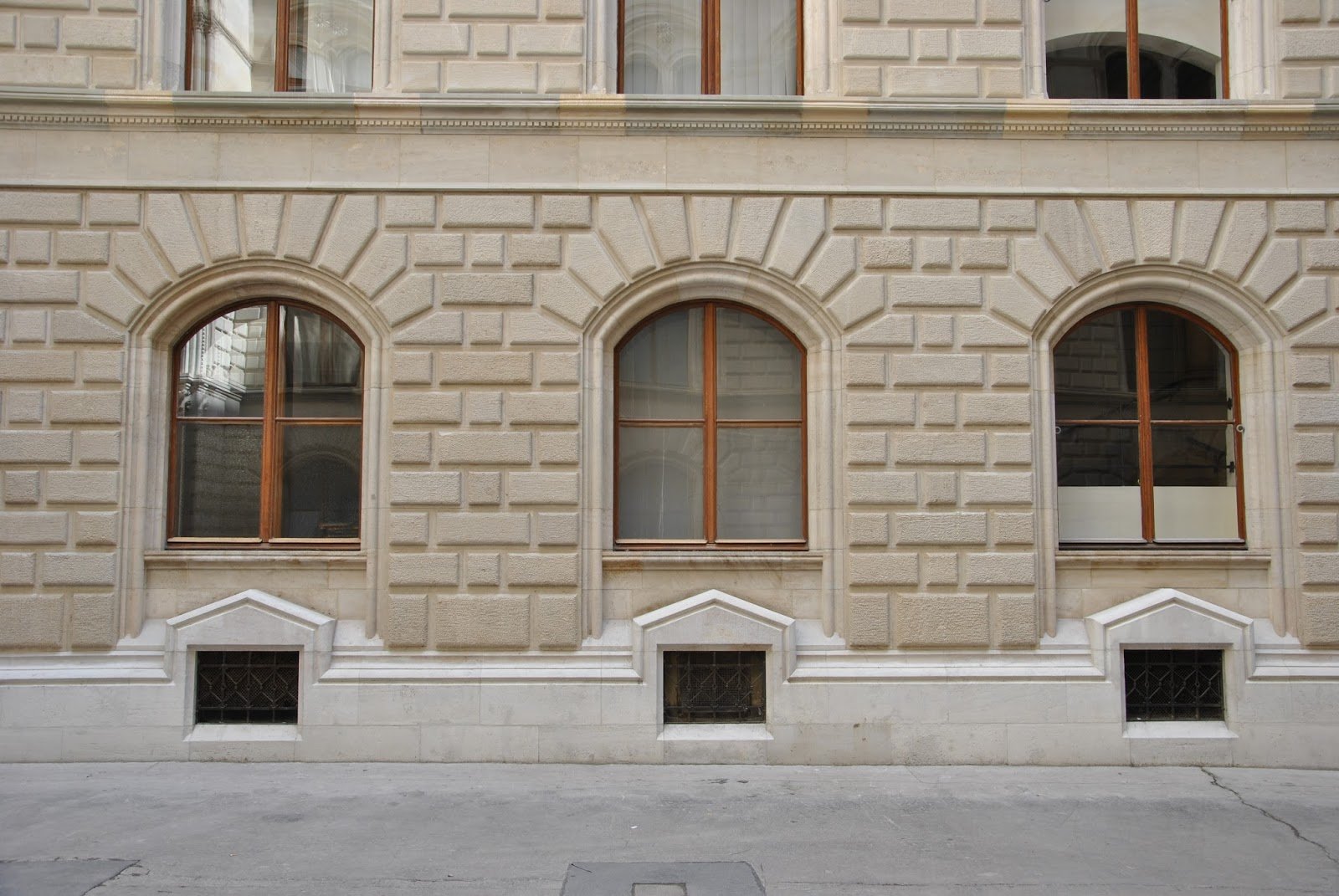#7053. Classical rusticated facade with arched windows in Renaissance style
Before us is a classic example of Renaissance styling in the facade architecture of a historic building. The facade is finished with rustication technique — a distinctive stone treatment with emphasized joint relief, which gives the wall an expressive texture and play of light and shadow. The so-called "diamond" rustication is particularly notable, where each stone block has a convex shape.
The window openings are made in the form of arches with classical framing, typical for the Italian Renaissance. The wooden frames of the windows with a brown hue effectively contrast with the light stone of the facade. Small basement windows with metal gratings are placed under the main windows, creating a rhythmic vertical division of the facade.
Horizontal articulation is provided by cornices and an inter-floor belt, which is one of the most important techniques in facade design, allowing to visually structure the building. This approach can be adapted for a modern private home as well, using different textures of finishing materials to create a similar play of light and shadow.
Elegance is given to this facade by the restrained color scheme — shades of beige and light gray, as well as well-thought-out proportions of architectural elements. When designing modern facades, it is useful to consider this classical principle of harmonious proportions even when using contemporary materials.
